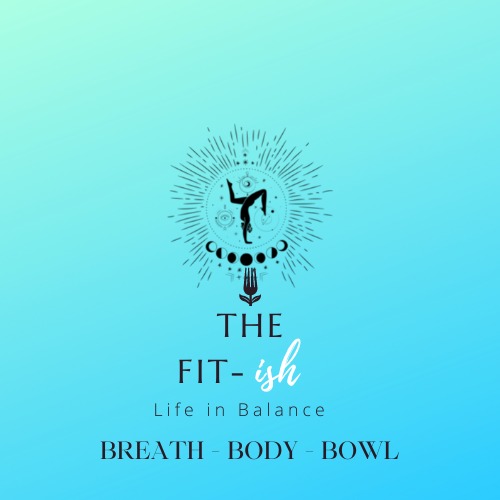My Body, Myself: Toward an Understanding of Binge Eating Disorder, Eating Disorder and Weight Stigma
Perceptions of BED.
Often viewed as problem of willpower, low-self-esteem, depression – not as a legitimate eating disorder.
Perception of binge eating increases stigma of obesity; “just stop overeating” mentality.
Eating disorders often trivialised (make (something) seem less important, significant, or complex than it really is.)
BED target of more blame than other psychological
disorders and other EDs.
Definition of BED
DSM(Diagnostic and Statistical Manual of Mental Disorders) V Criteria:
Recurrent episodes of “binge eating”: eating in a discrete period of time (e.g. 2 hours) an amount of food larger than most people would eat in a similar period under similar circumstances. A sense of a lack of control over the eating during the episode.
Binge eating episodes associated with at least 3 of the following:
Eating more rapidly than normal
Eating until feeling uncomfortably full
Eating large amounts of food when not hungry
Secretive eating
Feeling disgusted, depressed or guilty after binge
Binge eating occurs, on average, 1 day per week for at least 3 months (DSM 5)
Disturbance does not occur exclusively during the course of anorexia or bulimia
Clinically, most critical is distress level and lack of perceived control, not amount consumed
Possible Medical Complications
Polycystic Ovarian Syndrome
Hypothyroidism
Cushing’s Syndrome (overproduction of cortisol)
Sleep Apnea
Asthma
Stress and Cortisol
Nutritional Deficiencies
Sleep Deprivation
Possible Etiological Factors
Genetic component (runs in families 10-15%)
Epigenetic influences
Neurological frontiers: pathway stimulation and binge eating
Learned behaviour: food is early, available soothing mechanism
Biological (restriction, diet rules, body equates weight loss with danger and triggers cravings and food obsession)
Family of Origin Issues: “10 going on 40”, caretaker role, oldest child/responsible one
Difficulties separating from family (guilt for autonomy is common)
Lack of adequate identity development/lack of mirroring
Significant attachment ruptures
Affect may be especially somatically experienced; difficulties with affect labelling/tolerance
Untreated trauma (sexual, physical, emotional, significant loss at early age); 10x more likely w/BED than other EDs; high rates of untreated PTSD/complex PTSD
Mood Disorders (anxiety (5x average), major depression (15x average), bipolar 5-7x average)
ADHD/ASD
Dopamine and yo-yo dieting
Weight stigma experiences
BED: Important Facts
Data also indicates the BED does not discriminate against race. BED is as common in African American women as it in Caucasian and Hispanic women
Most binge eaters, are “overweight or obese”, although some may be at “normal” weight. In weight reduction treatment programs, BED is a frequent phenomenon ranging up to 30%. Maybe as high as 70% in bariatric programs.
70% of BED pts are overweight/obese (so 30% are NOT)
BED is a psychiatric disorder and is a red flag for both
medical and psychological disorders.
Being overweight or obese does NOT necessarily imply the presence of BED
The Role of Food in the Lives of Binge Eaters
Emotion regulation
Self-punishment
Distraction
Boundary setting
Soothing (trauma activation)
Rebellion
Body as Billboard
Uses of food may or may not be conscious
The Religion of Thin :
A Culturally Sanctioned Avoidance of Pain by Promising Happiness
The politics of body hate…
A culture fixated on female thinness is not an obsession about female beauty; it is an obsession about female obedience. [Weight stigma} is the most potent political sedative in women’s history; a quietly {shameful} population is a tractable one.
What is Weight Stigma?
Bullying, teasing, negative body language, harsh comments, discrimination or prejudice based on a person’s body size or weight.
Reflects three basic assumptions:
thin is always preferable
thin is always possible
thin people are better people
Weight Stigma
Weight discrimination occurs more frequently than gender or age discrimination
Weight discrimination has increased 66% in the last decade
Peer victimisation can be predicted by weight
Obese youth who are victimised by their peers are 2-3x more likely to experience suicidal thoughts and behaviours than those who are not victimised.
It is the stigmatising experience (because it induces shame), not the weight itself, contributing to adverse psychological outcomes such as BED
Dangerous World
Odds for obese child to be bullied is 63% higher than for a “normal” weight child.
Reflects prejudices and thin ideal
Increases stress and likelihood of using food
Bullying is trauma; it also further reinforces the shame paradigm (“I am bad”)
You can lead where you haven’t been…
How do you feel about your own body?
Do you make body disparaging comments about yourself? Others?
Have you gained or lost significant amounts of weight or had an eating disorder?
What assumptions do you make about fat people? About thin people?
If you don’t want to try and make peace with your own body, don’t work with BED.
Letting go of BED
What we ask clients to do is akin to jumping off a cliff; loss of both primary coping mechanism, and the “dream” of thin.
Must help clients understand that treatment is additive; problematic behaviours around food do not change until they can be understood and new strategies put in place
Must use a strength based model.
“Resistance”
A psychological defence mechanism wherein a patient rejects, denies, or otherwise opposes the therapeutic efforts of a psychotherapist (or treatment team)
“Resistance”
An underground organisation of a conquered or nearly conquered country engaging in sabotage and secret operations against occupying forces and their collaborators.
Recovery vs. Symptom Control
“Recovery is about hearing the inner world with curious, compassionate ears; about speaking the truth of the body, the heart and the mind. It is about honouring somatic cues most of the time, slowly taking judgment and obsession out of eating and movement. Recovery is learning to challenge cultural ideals of beauty, recognise the damage of weight stigma and bias on one’s body image, and heal from the possible traumas of living in a bigger body in this culture. Recovery from BED requires advocacy, both internal and external. Recovery is not about never overeating again, nor is it’s purpose weight loss (although it may occur). The work is to recognise when the eating disorder presents itself, why it does so, and have the resources available to address, and when possible over time, heal, the trigger. And it is about valuing the whole Self, including the ED, as is.”
Goals of Treatment
know who is talking: BED voice vs. Self
learn triggers and how to intervene in “behaviour chains”
understand the loss and fear associated with recovery
work on shame and learning to work with inner critics
address diet mentality; shift from weight focus to health focus and body trust/awareness
heal past wounds (trauma work/somatic healing)
learn to set boundaries/create healthy relationships
find and celebrate the unique self
Dieting
Dieting is contraindicated in any eating disorder treatment plan; it amounts to prescribing a symptom
Trying to restrict based on external rules alone will trigger the symptoms
DIETING PREVALENCE AND EATING DISORDERS: Dieting as “gateway” behaviour
81% of 10-year-olds are afraid of being fat; 51% of 9- and 10- year-old girls feel better about themselves if they are on a diet.
The average woman is 5’4″ tall and weighs 140 pounds; the average model is 5’11” tall and weighs 117 pounds; most fashion models are thinner than 98% of women
91% of women recently surveyed on a college campus had attempted to control their weight through dieting; 22% dieted “often” or “always”
35% of “normal dieters” progress to pathological dieting
WEIGHT LOSS ≠ HEALTH
DIETING ≠ WEIGHT LOSS
A review of over 40 studies show that 95% of weight lost through dieting is regained
“Paradoxically, adolescent girls with elevated scores on dieting scales are at increased risk for future onset of obesity…indicating that dieting predicts weight gain in adulthood.”
Psychological and Behavioural Risk Factors for Obesity Onset in Adolescent Girls:
“Adolescents using weight control practices at Time 1 increased their BMI by about one more unit than adolescents not using any weight control behaviours and were at approximately three times greater risk for being overweight at Time 2.”
‘Obesity, Disordered Eating, and Eating Disorders in a Longitudinal Study of Adolescents: How Do Dieters Fare Five Years Later?’
“Between one-third and two-thirds of dieters regain more than they lose.”
Search for Effective Obesity Treatment: Diets are Not the Answer.
EFFECTS OF WEIGHT CYCLING:
Damage to heart and cardiovascular system
Reduces bone mass and increases risk of hip fractures
Increases risk of gallstones
May cause DNA damage or abnormal cell changes in breast tissue
May increase risk of hysterectomy
Causes physical weakness
May alter tryptophan levels and effect serotonin function—and ironically, increase impulsivity and depression
HAES (Health at Every Size) Basic Principles
1. Accepting and respecting the diversity of body shapes and sizes.
2. Recognising that health and well-being are multi-dimensional and that they include physical, social, spiritual, occupational, emotional, and intellectual aspects.
3. Promoting all aspects of health and well-being for people of all sizes.
4. Promoting eating in a manner which balances individual nutritional needs, hunger, satiety, appetite, and pleasure.
5. Promoting individually appropriate, enjoyable, life-enhancing physical activity, rather than exercise that is focused on a goal of weight loss.
Size Acceptance and Intuitive Eating Improve Health for Obese, Female Chronic Dieters.
Eating with HAES in Three Quick Checkpoints
1. Am I hungry right now? What is my immediate desire (if all foods are allowable)?
2. 30,000 foot view of nutrition (“How is my green quotient?”)
3. How do I want to feel after this meal/snack? What has my body taught me about how to eat to feel that way?
Hope you liked reading my BLOG!!
If you are in doubt and need a consultation feel free to contact me.
Karuna – +65 96652360









